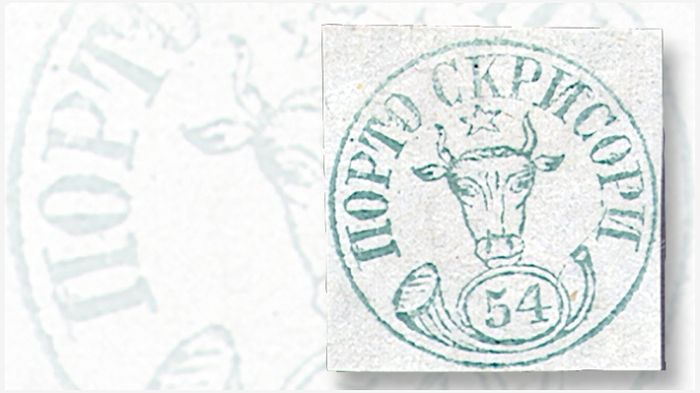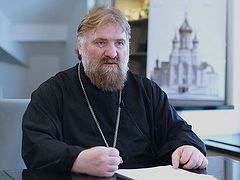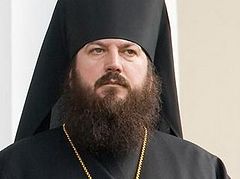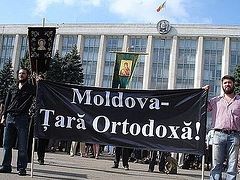Source: Linn's Stamp News
May 12, 2016
Historically, it would be hard to overstate the national and cultural influence of the Orthodox Church in Moldova. Today, upwards of 95 percent of the population of roughly 3 million are Orthodox Christians. In a sense, to be Moldovan is to be Orthodox.
Trying to define Moldova can be a bit like trying to nail jelly to the wall. A national entity named Moldova has existed since 1359. But exactly what Moldova is has varied greatly over time.
The 2016 Scott Classic Specialized Catalogue of Stamps and Covers 1840-1940 lists stamps of Moldavia issued and in use from 1858 to 1862 under Romania-Moldavia.
A Moldavia 54-para Coat of Arms stamp (Romania-Moldavia Scott 2) is shown nearby. But what relation does that stamp issuing entity bear to the modern Republic of Moldova?
Moldovans are descended from the Dacians, a tribe in eastern Europe who lived in and around the Carpathian mountains west of the Black Sea. Beginning in the first century A.D., Dacia was conquered and incorporated into the Roman Empire.
After the Roman conquest, the Indo-European Dacian language was supplanted by Latin and became extinct. Over the centuries, Latin evolved into Romanian. The language of Moldova is Romanian.
When the Roman Empire was divided into the Western Roman Empire and the Byzantine Empire, Moldova came under the Byzantines.
Moldova’s boundaries have varied greatly over time. In the 14th century, it comprised western Moldova (also known as Moldavia, now in Romania), eastern Moldova (now in the Republic of Moldova), eight counties of eastern Romania, Bessarabia, and part of southwestern Ukraine.
In 1600, Prince Michael the Brave temporarily united Moldova, Wallachia, and Transylvania as the Kingdom of Romania. They would not be reunited again until 1918.
In 1812, the Ottoman Empire ceded eastern Moldova and Bessarabia to the Russian Empire. In 1859, western Moldova united with Wallachia to form Romania. After World War I, Romania regained eastern Moldova and Bessarabia.
In 1940, under the Nazi-Soviet Nonaggression Pact of 1939, Romania was forced to cede those territories to the Soviet Union, which used them to create the Moldovan Soviet Socialist Republic. In June 1941, Romania temporarily regained Moldova and Bessarabia by joining the Axis invasion of the USSR. In 1944, the Soviet Union recovered Moldova and Bessarabia by force of arms.
In 1991, as the Soviet Union broke up, Moldova declared its independence on Aug. 27. Many observers expected Moldova to rejoin Romania at that point, but fear of the Russian reaction to such a move probably prevented it from serious consideration.
Romanians and Moldovans are unique in that, although they speak a Romance language related to French, Spanish, Italian, and Portuguese and use the Latin alphabet, they are Orthodox Christians.
In church tradition, St. Andrew, one of the 12 apostles, first brought Christianity to Moldova. A 2015 Romania 7.60-leu Cave of St. Andrew stamp (Scott number to come) commemorates the place near the Black Sea, which served as St. Andrew’s a base of operations for his 20-year mission to the Scythians. Hard evidence of a Christian presence in Moldova dates to the third century A.D.
As part of the Byzantine Empire, Moldovans became Eastern Orthodox Christians at the Great Schism of 1054. By the 14th century, the Moldovan church was under the authority of the metropolitan of Galicia (Halych in Ukrainian).
In 1391, the Orthodox patriarch in Constantinople raised the Moldovan church’s status by appointing a metropolitan to head it. Moldovan clerics have impacted Orthodox Christianity far beyond the borders of Moldova.
Petru Movila (Petro Mohyla in Ukrainian), born in 1596, was the son of Simon Movila, prince of Moldavia. After the assassination of his father, he took refuge in Ukraine, then part of the Lithuanian-Polish Commonwealth, where he took orders as a monk of the Lviv Brotherhood.
He combined spiritual awareness with national awakening, encouraging the emergence of Ukrainian and Romanian languages and national identities. A leading theologian of the day, he encouraged replacing Old Church Slavonic with Romanian as the liturgical language in Romanian provinces.
He founded the Lavra Monastic School for training monks in theology, philosophy, rhetoric and the classics. He was instrumental in introducing the printing press in Ukraine and the Romanian territories. He served as metropolitan of Kiev, Halych, and All Rus from 1633 until his death in 1647.
On July 30, 1996, Moldova commemorated Metropolitan Petru Movila on a 5.40-leu stamp (Scott 217). He was also commemorated on a Ukraine 20-kopiyok stamp (Scott 258) issued Dec. 31, 1996.
St. Varlaam, metropolitan of Moldova (1590-1657), was a contemporary of Petru Movila. He was born Vasile Motoc in the Moldovan village of Borcesti. Because of his learning and spirituality, he was elected egumen (abbot) of his monastery shortly after taking orders as a monk and receiving the monastic name Varlaam.
He made the first translations of writings of the apostolic fathers into Romanian. He was elected metropolitan of Moldova in 1632, occupying the office until his death. An educational reformer, he encouraged translations into Romanian and the printing and dissemination of books. He was commemorated on a Moldova 25-ban stamp (Scott 324) issued Sept. 12, 1999.
In 1812, the Russian Empire annexed Bessarabia (roughly the eastern half of Moldova), which then came under the authority of the Russian Orthodox patriarch. In 1813, the Russian church established the eparchy of Chisinau and Hotin under the Metropolitan Gavril Banalescu-Bodoni (1746-1821).
A native of Transylvania, he had previously served as exarch of Moldavia-Wallachia and metropolitan of Kiev and Halych. On July 30, 1996, Moldova issued a 10b Metropolitan Gavril stamp (Scott 213) to commemorate his life.
Patriarch Neophytus VII of Constantinople saw Metropolitan Gavril’s appointment as a Russian infringement on his authority and had the metropolitan arrested by Ottoman authorities. Although imprisoned in Constantinople, he refused to renounce his position and was eventually freed after Russian diplomatic intervention.
In 1918, the Romanian Orthodox Church created the metropolis of Bessarabia under the Moldavian autonomous Orthodox Church. Monk, priest and missionary Gurie Grosu was the first to be appointed to the office.
Grosu was born in Nimoreni in 1877. As Metropolitan Gheorge, he was forced to retire from office in 1936 after chastising Romanian King Carol II for adultery and abandonment of his wife. He died in Bucharest in 1943. A Moldova 2.40-leu Metropolitan Gheorge stamp (Scott 325) was issued in 1999.
Today, there are two Eastern Orthodox churches in Moldova, a legacy of conflicting lines of authority between the Romanian Church and the Russian Church.
After Moldova was occupied by the USSR, the metropolis of Bessarabia was abolished in 1944 and the Moldovan Orthodox Church became an autonomous church under the authority of the patriarch of Moscow and All Rus.
Following the dissolution of the Soviet Union, the Romanian Orthodox Church resurrected the metropolis of Bessarabia, while the Moldovan Orthodox Church remains an autonomous church under the Russian Orthodox Church.
The Moldovan Church has 1,231 parishes and almost 1,400 priests. The metropolis of Bessarabia has 84 parishes.
The Moldovan Orthodox Church does not recognize or commune with the metropolis of Bessarabia. The metropolis of Bessarabia’s position is that the two churches can coexist and cooperate in their greater mission to serve God and Moldovan Christians.





good to be able to relate to her heritage.
Maria Ivanov